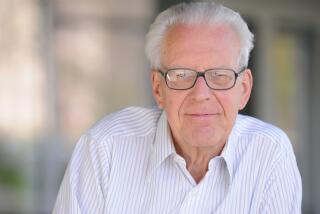A Few More Technological Heroes
- Share via
Your Special Millennium Issue/Science & Technology (“One Big Think Tank,” July 25) was extremely educational, but you were remiss in not including in your science all-stars list two important contributions to science and exploration from Hughes Aircraft.
In 1963, Hughes developed Syncom and Early Bird, the world’s first synchronous communications satellites (at about 23,000 miles above Earth, the satellite remains in a position above a particular spot on the Earth’s surface). The inventor was Donald T. Williams, a Hughes scientist named by the U.S. Chamber of Commerce as one of the nation’s outstanding young men of 1965. By 1991, Hughes provided almost 70% of all communications satellites in commercial service.
Then in 1966, Hughes designed Surveyor for the first successful fully controlled soft-landing on the moon, and in the ensuing two years, four more Surveyors landed safely. This program was a necessary precursor to the design of the Apollo lunar landing module.
Robert Corbo
Ventura
*
I was surprised at the omission of a great scientist: a Nobel Prize winner in chemistry, Glenn T. Seaborg, who discovered 10 elements. He attended David Starr Jordan High School in the heart of Watts.
William H. Ibarra
La Habra
*
OK, you know-it-alls who check in with the Committee for the Scientific Investigation of Claims of the Paranormal to hear what irrational thoughts Southern Californians have regarding UFOs and paranormal phenomena. There’s nothing objectively scientific or investigative about that organization. They are die-hard debunkers whom writers and TV producers enlist to provide an easy “rational explanation” for any story that attempts to stretch human understanding of a complex universe. I can’t wait until CSICOP becomes synonymous with the Flat Earth Society.
Martin Steele
Las Vegas
*
Dr. F. Sherwood Rowland isn’t the only one with a two-decade crusade on the hole in the ozone layer. The U.S. aerosol industry also has been working to educate consumers that it has been OK To Spray! for more than 20 years. A recent survey sponsored by the Consumer Aerosol Products Council (CAPCO) found that seven of 10 Americans still mistakenly believe that aerosols threaten the ozone layer and are unaware of the 1978 regulations.
Allow us to remind your readers that aerosols are CFC-free and, in many places, recyclable, as are other steel containers.
Rebecca Siegel, CAPCO
Washington, D.C.





